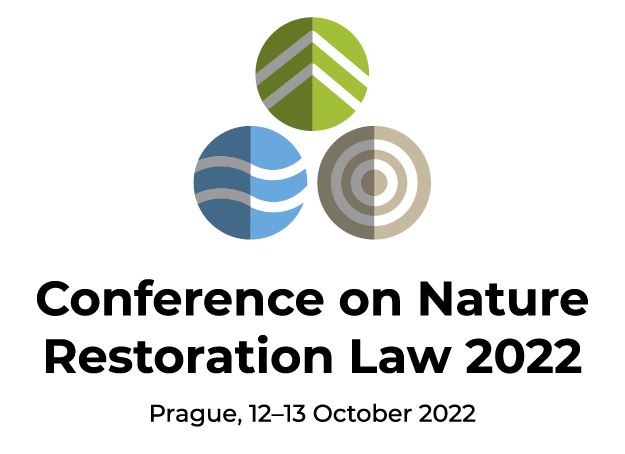Written by Andreas Beckmann, regional CEO of WWF Central and Eastern Europe
Code red
We are in crisis, facing climate change as well as nature loss. We need transformational change, and there is no time to wait (Janica Borg).
This must be the framing and approach: at stake is our welfare and well-being, our very survival. As Ladislav Miko pointed out, “we do it because we need it, not because it is a political goal”.
Accelerate the Green Deal
Confronted by the challenges facing us, from the war in Ukraine to inflation and the energy crisis, we need to move forward and not backward. As EU Commissioner Sinkevicius emphasized, we need to accelerate, not pause, the implementation of the Green Deal.
In doing so, Ladislav Miko pointed out, we need to take a holistic approach, working at a landscape scale that can bring together different elements, including habitats and ecosystems as well as economic and social factors.
We have the knowledge needed
What is clear is that we have the knowledge and data we need for nature restoration. A lack of knowledge or data cannot be an excuse for inaction.
Scientists can help set the priorities and help understand the processes, and they can benefit from the feedback.
A good investment
Restoration is a good investment – it provides real value for money, with an at least eight-fold return on investment. Restoration can have co-benefits, including carbon sequestration especially on peatlands (low-hanging fruit) as well as agricultural land and soil (Rudy van Diggelen). That said, while nature restoration can provide a useful contribution to carbon sequestration, it is not a panacea for climate change (Rob Field).
Ambitious, but achievable
The EU Restoration Law focuses on habitats, not species, and on the majority of habitats in the European Union that are not in good status (Michael Hošek). The targets are ambitious but achievable (Janica Borg).
It is in any case good that we have the proposal – it is an utterly important signal underlining what is needed (Rudy van Diggelen).
Integration is needed in relevant sectoral policies, particularly fisheries, agriculture, and forestry. “The nature restoration law will fail if it does not include fisheries, the Common Fisheries Policy” (Vera Coelho). The same applies to the Common Agricultural Policy and Forest Strategy, but also beyond this, to the circular economy and resource efficiency, which can steer demand for resources and land. The fewer resources that are needed, the less impact there will be on habitats.
Engagement is needed
We need to engage and bring on board relevant stakeholders, including fishermen, farmers, and foresters but also businesses. There are many positive examples of working with nature rather than against it, including agriculture (Pavol Littera, Tanja Šumrada), forestry (Tomáš Pospíšil), and business (Carolyn Jewell).
We need to take into account stakeholders‘ interests, including the need to align incentives. At a basic level, we need to engage with stakeholders and win their trust. “Know your enemy and he will become your friend” (Rob Field).
The real impacts of nature loss
A basis for engagement is our point of departure: awareness and understanding of our reliance on nature, including for farming, forestry, and for business.
We need to highlight our dependence on nature and the interdependence between nature and other interests – in the longer term, there cannot be a tradeoff between nature and (for example) agriculture. Agricultural production fundamentally depends on nature for fertility, pollination, water and other goods and services. As Rudy van Diggelen dais, “You can’t negotiate with ecosystems”.
As Ariel Brunner pointed out, the real risk for farming, forestry, fishing, and for business more generally, is the collapse of ecosystems. In fact, the restoration of nature is an insurance policy for agricultural production (Virginijus Sinkevičius).
Capacity and financial support
There is significant funding potentially available for nature conservation and restoration, e.g. in NextGenerationEU, which includes significant funds that must be earmarked for biodiversity (Stefan Leiner). However, the potential on paper is usually not realized in practice in individual member states (Ariel Brunner).
The EU LIFE program is a good example of the kind of support that is needed: relatively flexible and results-focused. But it needs to be significantly upscaled (Pavol Littera).
We also need much less funding – of the perverse kind, supporting activities that are detrimental to nature.
That said, an even greater bottleneck is capacity, both human and technical (Ariel Brunner). Going forward, we need to invest in building this capacity through education and development.
In conclusion:
- We are in crisis – code red
- We need transformational change – including on nature
- It can be done
- We have what we need
- It needs to be done now
- Together possible
Recorded video of the conference with chapters
About the Conference on Nature Restoration Law
The loss of biodiversity is already putting our planet, as well as our chances of survival at huge risk. Scientists are unequivocal on the need to not only protect the nature we have left but also restore it. This means improving and, where necessary, recreating the habitats decimated by human activities. In 2020, the European Environment Agency’s State of Nature report highlighted that the loss of biodiversity, including the alarming decline of birds, is due to a range of factors from draining wetlands for agriculture to reductions in old-growth forests and unsustainable forest practices.
These human activities are progressively decimating the natural habitats we all depend on to survive. As a result of the commitment undertaken in the Biodiversity Strategy 2030, the European Commission is developing a Nature Restoration Law. If well designed, this law could represent one of the few serious hopes of halting biodiversity loss in Europe by fundamentally changing the way we use land, rivers, and seas. The proposal was published on the 22nd of June 2022.
The objective of this conference was to: (i) involve a wide community of decision-makers, experts, and practitioners in discussing the EU Restoration Law proposal; (ii) enable a critical assessment of the opportunities and impacts connected to the EU Restoration Law proposal; and (iii) contribute to a general consensus that an ambitious and realistic EU Restoration Law can be achieved.



